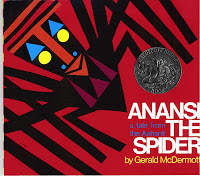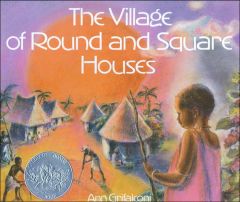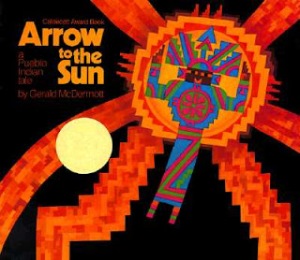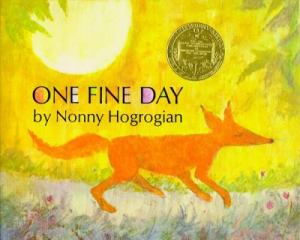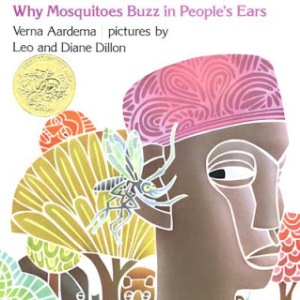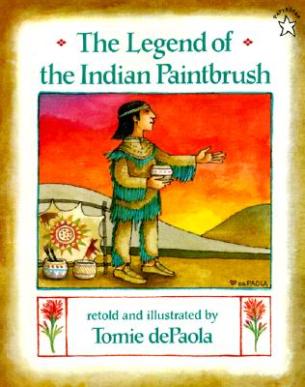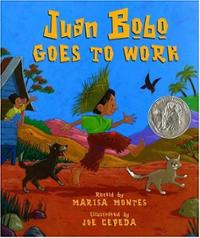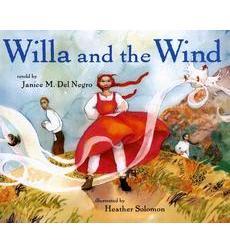Publishing: Holt, Rhinehart and Winston, New York, 1972
Awards: 1973 Caldecott Honor
Description: Anansi the spider has six sons that are all good sons. They all have to come to his aid and rescue him when he gets into trouble, so when he finds a prize-a great globe of light-he is not sure which son should be rewarded. He gives it to the god of all things, Nyame, and when she sees them arguing over it, she puts it in the sky. It is still there-the moon. The illustrations are bold and geometric, almost tribal.
Programming: Have students point out Ghana on the map. Do a little bit of outside research about the Ashanti people and how they live before reading the story. Read other folktales, especially those that explain why something is the way it is, such as Why Mosquitos Buzz in People’s Ears. Compare and contrast the tales.

